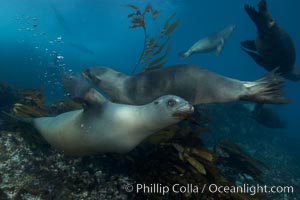
California sea lions, underwater at Santa Barbara Island. Santa Barbara Island, 38 miles off the coast of southern California, is part of the Channel Islands National Marine Sanctuary and Channel Islands National Park. It is home to a large population of sea lions.
Species: California sea lion, Zalophus californianus
Location: Santa Barbara Island, California
Image ID: 23578
Species: California sea lion, Zalophus californianus
Location: Santa Barbara Island, California
Image ID: 23578
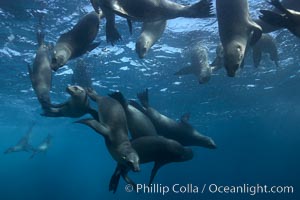
California sea lions, underwater at Santa Barbara Island. Santa Barbara Island, 38 miles off the coast of southern California, is part of the Channel Islands National Marine Sanctuary and Channel Islands National Park. It is home to a large population of sea lions.
Species: California sea lion, Zalophus californianus
Location: Santa Barbara Island, California
Image ID: 23579
Species: California sea lion, Zalophus californianus
Location: Santa Barbara Island, California
Image ID: 23579
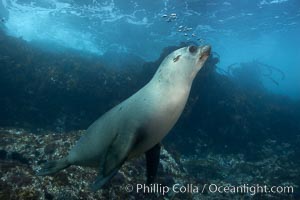
California sea lion, underwater at Santa Barbara Island. Santa Barbara Island, 38 miles off the coast of southern California, is part of the Channel Islands National Marine Sanctuary and Channel Islands National Park. It is home to a large population of sea lions.
Species: California sea lion, Zalophus californianus
Location: Santa Barbara Island, California
Image ID: 23580
Species: California sea lion, Zalophus californianus
Location: Santa Barbara Island, California
Image ID: 23580
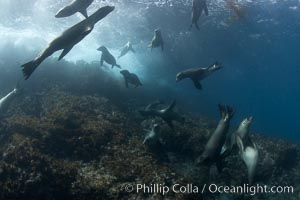
California sea lions, underwater at Santa Barbara Island. Santa Barbara Island, 38 miles off the coast of southern California, is part of the Channel Islands National Marine Sanctuary and Channel Islands National Park. It is home to a large population of sea lions.
Species: California sea lion, Zalophus californianus
Location: Santa Barbara Island, California
Image ID: 23581
Species: California sea lion, Zalophus californianus
Location: Santa Barbara Island, California
Image ID: 23581
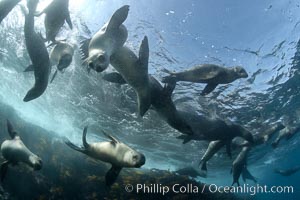
California sea lions, underwater at Santa Barbara Island. Santa Barbara Island, 38 miles off the coast of southern California, is part of the Channel Islands National Marine Sanctuary and Channel Islands National Park. It is home to a large population of sea lions.
Species: California sea lion, Zalophus californianus
Location: Santa Barbara Island, California
Image ID: 23582
Species: California sea lion, Zalophus californianus
Location: Santa Barbara Island, California
Image ID: 23582
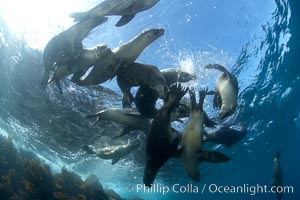
California sea lions, underwater at Santa Barbara Island. Santa Barbara Island, 38 miles off the coast of southern California, is part of the Channel Islands National Marine Sanctuary and Channel Islands National Park. It is home to a large population of sea lions.
Species: California sea lion, Zalophus californianus
Location: Santa Barbara Island, California
Image ID: 23583
Species: California sea lion, Zalophus californianus
Location: Santa Barbara Island, California
Image ID: 23583
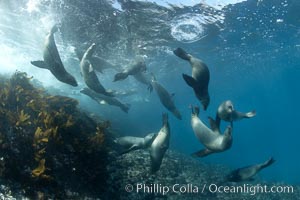
California sea lions, underwater at Santa Barbara Island. Santa Barbara Island, 38 miles off the coast of southern California, is part of the Channel Islands National Marine Sanctuary and Channel Islands National Park. It is home to a large population of sea lions.
Species: California sea lion, Zalophus californianus
Location: Santa Barbara Island, California
Image ID: 23584
Species: California sea lion, Zalophus californianus
Location: Santa Barbara Island, California
Image ID: 23584
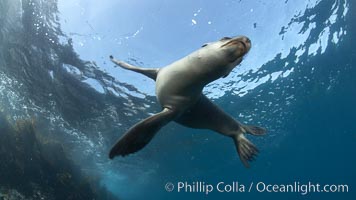
California sea lion, underwater at Santa Barbara Island. Santa Barbara Island, 38 miles off the coast of southern California, is part of the Channel Islands National Marine Sanctuary and Channel Islands National Park. It is home to a large population of sea lions.
Species: California sea lion, Zalophus californianus
Location: Santa Barbara Island, California
Image ID: 23585
Species: California sea lion, Zalophus californianus
Location: Santa Barbara Island, California
Image ID: 23585
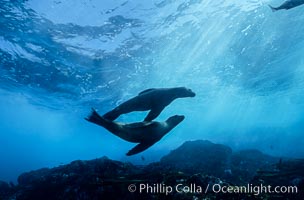
California sea lion.
Species: California sea lion, Zalophus californianus
Location: Santa Barbara Island, California
Image ID: 00643
Species: California sea lion, Zalophus californianus
Location: Santa Barbara Island, California
Image ID: 00643
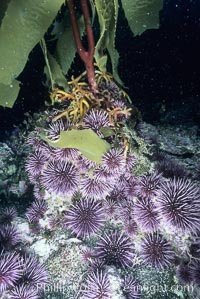
Purple urchins destroying/eating giant kelp holdfast.
Species: Purple urchin, Macrocystis pyrifera, Strongylocentrotus purpuratus
Location: Santa Barbara Island, California
Image ID: 03404
Species: Purple urchin, Macrocystis pyrifera, Strongylocentrotus purpuratus
Location: Santa Barbara Island, California
Image ID: 03404
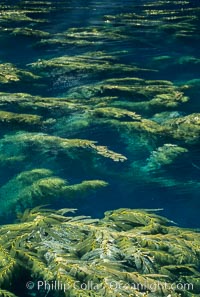
Kelp plants reaching surface, spreading out.
Species: Giant kelp, Macrocystis pyrifera
Location: Santa Barbara Island, California
Image ID: 04669
Species: Giant kelp, Macrocystis pyrifera
Location: Santa Barbara Island, California
Image ID: 04669
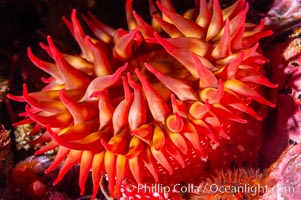
White-spotted rose anemone.
Species: Tealia anemone, Urticina lofotensis
Location: Santa Barbara Island, California
Image ID: 10145
Species: Tealia anemone, Urticina lofotensis
Location: Santa Barbara Island, California
Image ID: 10145
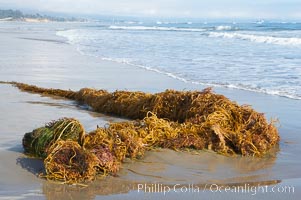
Drift kelp has washed ashore on a sandy California beach. Winter brings large surf and increased wave energy which often rips giant kelp from the ocean bottom, so that it floats down current, often washing ashore.
Species: Giant kelp, Macrocystis pyrifera
Location: Santa Barbara, California
Image ID: 14884
Species: Giant kelp, Macrocystis pyrifera
Location: Santa Barbara, California
Image ID: 14884
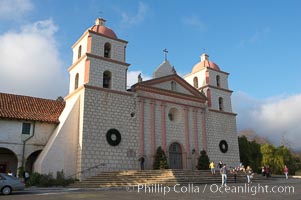
The Santa Barbara Mission. Established in 1786, Mission Santa Barbara was the tenth of the California missions to be founded by the Spanish Franciscans. Santa Barbara.
Location: Santa Barbara Mission, California
Image ID: 14885
Location: Santa Barbara Mission, California
Image ID: 14885
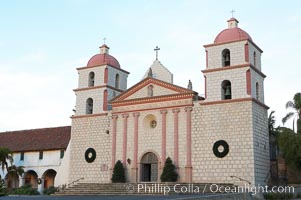
The Santa Barbara Mission. Established in 1786, Mission Santa Barbara was the tenth of the California missions to be founded by the Spanish Franciscans. Santa Barbara.
Location: Santa Barbara Mission, California
Image ID: 14886
Location: Santa Barbara Mission, California
Image ID: 14886
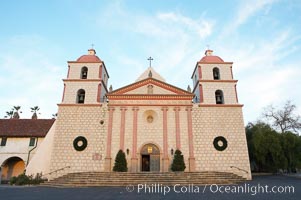
The Santa Barbara Mission. Established in 1786, Mission Santa Barbara was the tenth of the California missions to be founded by the Spanish Franciscans. Santa Barbara.
Location: Santa Barbara Mission, California
Image ID: 14887
Location: Santa Barbara Mission, California
Image ID: 14887
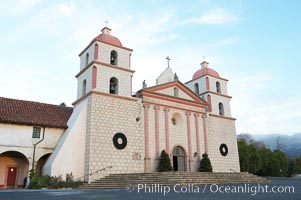
The Santa Barbara Mission. Established in 1786, Mission Santa Barbara was the tenth of the California missions to be founded by the Spanish Franciscans. Santa Barbara.
Location: Santa Barbara Mission, California
Image ID: 14888
Location: Santa Barbara Mission, California
Image ID: 14888
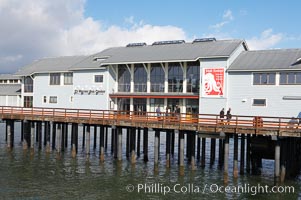
The Ty Warner Sea Center, a part of the Santa Barbara Museum of Natural History, located on Stearns Wharf.
Location: Santa Barbara Museum of History, California
Image ID: 14889
Location: Santa Barbara Museum of History, California
Image ID: 14889
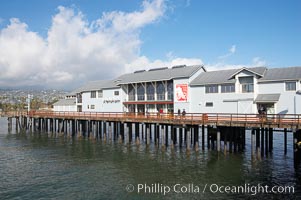
The Ty Warner Sea Center, a part of the Santa Barbara Museum of Natural History, located on Stearns Wharf.
Location: Santa Barbara Museum of History, California
Image ID: 14890
Location: Santa Barbara Museum of History, California
Image ID: 14890
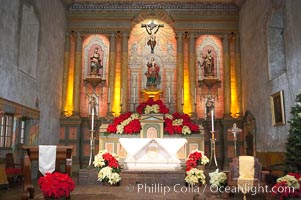
Inside of the parish of the Santa Barbara Mission. Established in 1786, Mission Santa Barbara was the tenth of the California missions to be founded by the Spanish Franciscans. Santa Barbara.
Location: Santa Barbara Mission, California
Image ID: 14891
Location: Santa Barbara Mission, California
Image ID: 14891
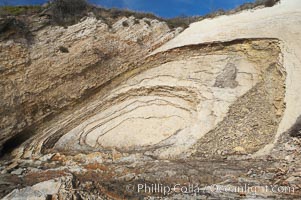
Shale is a fine-grained detrital sedimentary rock formed by the compaction of clay, silt, or mud. Shale is formed when mud is pressed into rock over millions of years and often breaks into big flat pieces. Here layers of shale emerge from the sand and cliffs at Gaviota State Beach north of Santa Barbara.
Location: Gaviota State Beach, Santa Barbara, California
Image ID: 14892
Location: Gaviota State Beach, Santa Barbara, California
Image ID: 14892
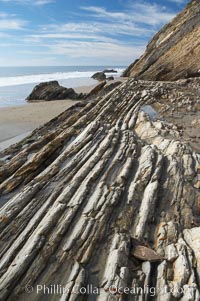
Shale is a fine-grained detrital sedimentary rock formed by the compaction of clay, silt, or mud. Shale is formed when mud is pressed into rock over millions of years and often breaks into big flat pieces. Here layers of shale emerge from the sand and cliffs at Gaviota State Beach north of Santa Barbara.
Location: Gaviota State Beach, Santa Barbara, California
Image ID: 14893
Location: Gaviota State Beach, Santa Barbara, California
Image ID: 14893
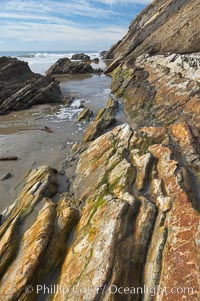
Shale is a fine-grained detrital sedimentary rock formed by the compaction of clay, silt, or mud. Shale is formed when mud is pressed into rock over millions of years and often breaks into big flat pieces. Here layers of shale emerge from the sand and cliffs at Gaviota State Beach north of Santa Barbara.
Location: Gaviota State Beach, Santa Barbara, California
Image ID: 14894
Location: Gaviota State Beach, Santa Barbara, California
Image ID: 14894
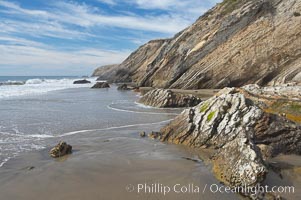
Shale is a fine-grained detrital sedimentary rock formed by the compaction of clay, silt, or mud. Shale is formed when mud is pressed into rock over millions of years and often breaks into big flat pieces. Here layers of shale emerge from the sand and cliffs at Gaviota State Beach north of Santa Barbara.
Location: Gaviota State Beach, Santa Barbara, California
Image ID: 14895
Location: Gaviota State Beach, Santa Barbara, California
Image ID: 14895
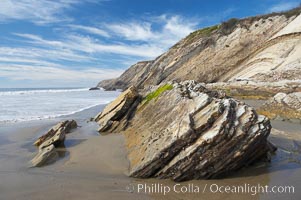
Shale is a fine-grained detrital sedimentary rock formed by the compaction of clay, silt, or mud. Shale is formed when mud is pressed into rock over millions of years and often breaks into big flat pieces. Here layers of shale emerge from the sand and cliffs at Gaviota State Beach north of Santa Barbara.
Location: Gaviota State Beach, Santa Barbara, California
Image ID: 14896
Location: Gaviota State Beach, Santa Barbara, California
Image ID: 14896
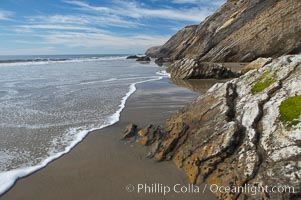
Shale is a fine-grained detrital sedimentary rock formed by the compaction of clay, silt, or mud. Shale is formed when mud is pressed into rock over millions of years and often breaks into big flat pieces. Here layers of shale emerge from the sand and cliffs at Gaviota State Beach north of Santa Barbara.
Location: Gaviota State Beach, Santa Barbara, California
Image ID: 14897
Location: Gaviota State Beach, Santa Barbara, California
Image ID: 14897
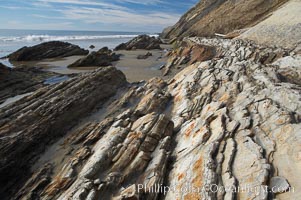
Shale is a fine-grained detrital sedimentary rock formed by the compaction of clay, silt, or mud. Shale is formed when mud is pressed into rock over millions of years and often breaks into big flat pieces. Here layers of shale emerge from the sand and cliffs at Gaviota State Beach north of Santa Barbara.
Location: Gaviota State Beach, Santa Barbara, California
Image ID: 14898
Location: Gaviota State Beach, Santa Barbara, California
Image ID: 14898
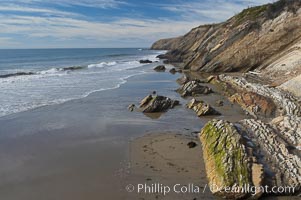
Shale is a fine-grained detrital sedimentary rock formed by the compaction of clay, silt, or mud. Shale is formed when mud is pressed into rock over millions of years and often breaks into big flat pieces. Here layers of shale emerge from the sand and cliffs at Gaviota State Beach north of Santa Barbara.
Location: Gaviota State Beach, Santa Barbara, California
Image ID: 14899
Location: Gaviota State Beach, Santa Barbara, California
Image ID: 14899
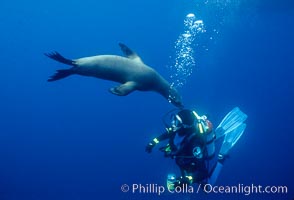
California sea lion and diver.
Species: California sea lion, Zalophus californianus
Location: Santa Barbara Island, California
Image ID: 01981
Species: California sea lion, Zalophus californianus
Location: Santa Barbara Island, California
Image ID: 01981
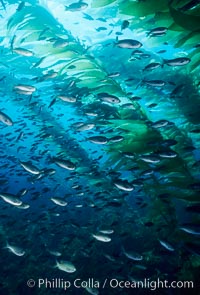
Blacksmith amidst kelp forest.
Species: Blacksmith, Chromis punctipinnis, Macrocystis pyrifera
Location: Santa Barbara Island, California
Image ID: 02410
Species: Blacksmith, Chromis punctipinnis, Macrocystis pyrifera
Location: Santa Barbara Island, California
Image ID: 02410